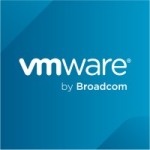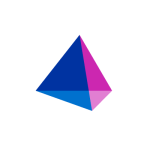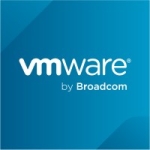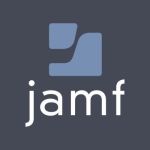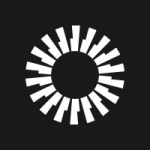What is our primary use case?
We've had a full range of use cases. It's great for community colleges or remote workers. Onsite it can be on desktops or mobile. It has the ability to wipe mobile devices. You can lock them down or control them.
Obviously, with COVID, the remote workforce has been a huge driver.
I had one client that had a bunch of gyms where you got to work out and they deployed Workspace One across all of them and used that just to serve all the desktops. That way everything was uniform, and everything was the same patching level. It just simplified management. That's one example of a specific use-case.
How has it helped my organization?
You can always do more to gain network efficiency for delivery. At the end of the day, you're sending mouse clicks, keyboards, and screens out, and just improving delivery mechanisms. If you've got a full spectrum of consumers out there, they are there on everything. You've got everything from cellular service to multi-gigabit in homes these days. Just optimizing the network, that is a thing companies are going to chase - and that will be the case across all solutions.
What is most valuable?
The customer needed to cut their budget. They already owned Workspace One which was an additional cost. VMware just released an MDM-only version of Workspace One, which was much less and that met their budget needs. They were able to stay on the same platform and cut their budget as they needed.
All of the features have been quite helpful. They are all equally powerful and equally valuable for businesses - however, for different reasons. It just depends on the business which features end up being the most valuable to them.
Mainly, the solution offers a simplified administration, which is likely the biggest value for a business. The solution makes it possible for businesses to free their people up to think about the next steps for the business.
Particularly during COVID, everybody had to evolve all of their businesses to survive. Everyone has been looking for better ROI.
The initial setup is pretty straightforward.
The solution has very good documentation.
We've found the solution to be very stable.
What needs improvement?
I'd like to see expanded device support, particularly for IoT things like SCADA devices. That would be a huge benefit, especially as we automate more in production in the commercial sectors like manufacturing.
For how long have I used the solution?
I've been using the solution for about three and a half years at this point. It's been a while now.
What do I think about the stability of the solution?
Overall I'm impressed with the solution. Some of the historical predecessors have not been as solid and stable as compared to Intune. VMware is adapting and scaling the Workstation One product line, and they likely just created the new MDM-only version to have something outside of Horizon for people who want only MDM.
That said, this is very stable. It doesn't have bugs or glitches and doesn't crash or freeze. It's very good.
What do I think about the scalability of the solution?
We've found that the solution works just as well for small companies as it does for large ones. It works across the spectrum of business sizes very well.
How are customer service and technical support?
I have had interactions with technical support. Each customer is different, however. Sometimes we get into some squirrely situations where we're trying to meet a weird customer need and have to pull them in.
I have found them to be very, very knowledgeable and very good at thinking out of the box. I've never had a bad experience with one of their engineers - even if they are trying to help me do something weird. When a customer wants to do something really weird, they find a way to make it work. I haven't had a situation where they couldn't make it work.
We are extremely satisfied with their level of support.
How was the initial setup?
The initial setup is not complex, especially if you're familiar with the VMware product line. It's very straightforward due to the fact that it's intuitive with our way of thinking.
Most IT people will tell you if they came up with Microsoft or Cisco, whichever ecosystem, once they understood the mental model behind product design, then it didn't matter. They could find their way around anything new. The same is true with VMware. If a company is used to VMware tools and other areas, it'll transition straight across for that.
In our case, we did an emergency deployment. What I would call a saturation deployment. We threw technical bodies at it to get it done faster. We turned it in in about 48 hours. The equipment came onsite.
Assuming the equipment's there, you can move fast. What might be an issue right now is lag time. The big lag time is just trying to get the equipment. Once it's was there, we were able to turn it around within 48 hours. It was for a 3,500 students community college that went overnight during COVID from classroom instruction to online.
Their first online classes were zoom. They deployed a whole bunch of low-cost laptops out there and they allowed people to bring their own devices if they had one, as long as the college could manage it. It was just kind of a rush, however, we got it out and deployed and we found that help desk calls were very low. It's just a combination of a great product and good documentation.
In terms of maintenance, if it's MDM-only then you just need one person, maybe half time, for up to a thousand users. I've got one person at about 2,500 users right now. It's just a matter of how much change goes on in the environment, or if are you deploying new applications or iOS versions. If you are constantly turning over devices, you may need a bit more maintenance. Typically this type of work is assigned to an end-point administrator.
What's my experience with pricing, setup cost, and licensing?
The solution runs at roughly around $36/user for a year. Companies just pay the basic fee. That's MSRP. They do sales off of that so that vendors can get discounts under certain circumstances. The price will vary, however, that's the MSRP on it.
I've seen them go crazy at the company's year-end. Timing really can be everything.
What other advice do I have?
I'm a solutions architect for a VMware partner. I supervise the implementation team. There are engineers that are out there that implement it and do the post-implementation support as well.
Largely, we are working with on-premises deployment models, however, we're working towards a hybrid deployment. It's hard for some organizations to break the old ways of thinking. They mistrust the cloud and while on-site is tried and true, and something you can put your hand on, it's just an education process and it takes time for companies to come around to the cloud is just as good.
I would advise companies to not implement as you learn. Rather take time to understand the product and plan everything ahead. It will be easier.
On a scale from one to ten. I'd put it at an eight. There's always room to improve and always room to grow. In comparison, for example, I'd rate Intune about a six, however, it's definitely coming.
Which deployment model are you using for this solution?
On-premises
Disclosure: My company has a business relationship with this vendor other than being a customer. Partner



